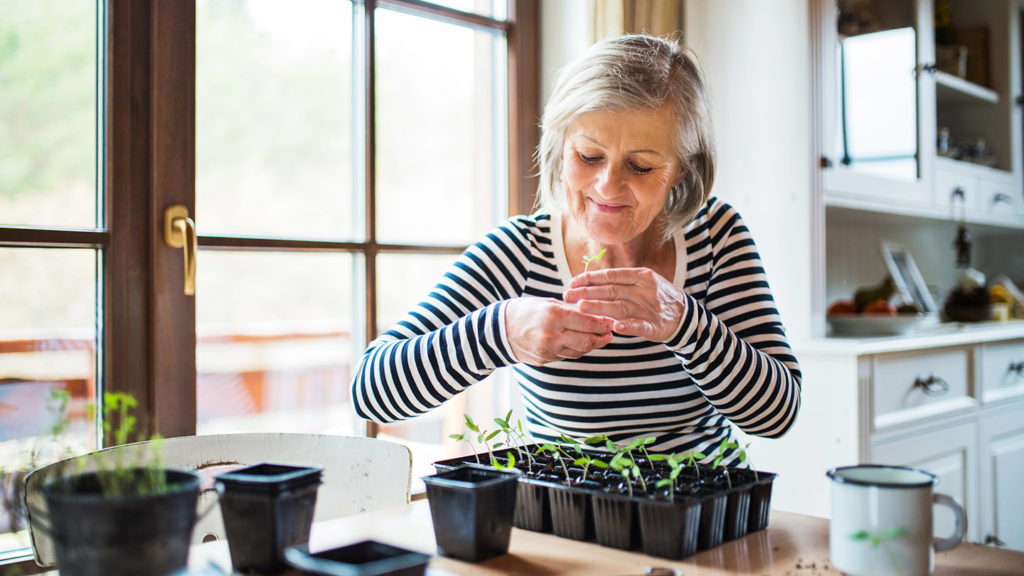
Indoor air quality is one of the most significant factors in creating a healthy environment in senior living communities and skilled nursing facilities, according to panelists who spoke during a McKnight’s Online Forum Tuesday.
“The indoor environment is filled with things that are becoming more common knowledge to the mainstream public as it relates to their effect on the human body,” Delos President and Chief Operating Officer Peter Scialla said. He was part of a panel discussing how indoor environmental enhancements can help reduce stress and promote overall well-being among residents and staff members.
The pandemic, Scialla said, was an “ignition switch” to raise and heighten awareness surrounding factors such as air, sound, light and water, among others, that furthered the work of the Wellness Innovations in Senior Environments, or WISE, initiative.
“We have a real shot here,” Scialla said. “The world is focused on the effects of the indoor environment on health and well-being due to the pandemic.”
Real-life research
Citing an Environmental Protection Agency statistic that people spend 90% of their time indoors, Kevin Mazurek, PhD, a research scientist at the Well Living Lab and an adjunct assistant professor at the Mayo Clinic, said that a goal of the lab is to understand what’s going on in older long-term care facilities and what can be done to improve the health and well-being of older adults and their professional caregivers.
The lab is conducting that research through the lens of solutions that focus on actionable conclusions that are practical, implementable and measurable, and that deliver a return on investment without requiring a significant capital investment from owners and operators.
“We’re looking at designing studies to understand how older adults perceive their environment and what’s different from our findings in the lab,” Mazurek said. “What is a healthy indoor environment for older adults to have positive benefits toward health and well-being?”
Sabra Health Care REIT President and CEO Rick Matros said that the California-based real estate investment trust got involved with the Well Living Lab through its environmental, social and governance, or ESG, initiatives. While looking at the abundance of products available to operators to improve quality of life for residents, patients and staff members, it became clear that outside expertise was necessary, he said.
One of Sabra’s skilled nursing facilities, which is 50% to 60% occupied, is being used by researchers at the Well Living Lab to provide feedback in real time, in a real-life application. Mazurek said that working in the facility provides researchers with a better understanding of how airborne transmissions move around within and between rooms, and how that affects residents and staff.
“The pandemic accelerated so many trends and brought to bear so many inequities in our system,” Matros said. “It’s always important when you go through a crisis to focus on the opportunities and the positives that can come out of that crisis, relative to doing a better job and making sure you are better prepared down the road.”
Workforce ROI
Scialla said the pandemic created a heightened awareness of how the indoor environment affects people, creating an opportunity to focus on driving progress and change. And he said it’s important to remember that health and well-being are not just about residents, but also caregivers.
Matros agreed, adding that addressing workforce issues isn’t just about increasing wages.
“To create or improve the environment to provide better quality of life for staff has a direct benefit and impact on direct quality of life for residents and patients,” Matros said. “We’ve gotten better over the years in addressing the needs of patients and residents from a holistic perspective. We’ve done a horrible job looking at staff from a holistic perspective — that is where the opportunity is for this.”
Investing in the physical environment can provide a return on investment in the form of staff recruitment and retention, he said.
“By doing things to affect the physical environment, it imparts to them how much value you see in them and should be reflected in the value they feel they bring to the job everyday,” Matros said. “We’re a mission-driven business. Despite the horrible circumstances over the last two-and-a-half years and the fact that wage issues have been there forever, they come to work and care deeply. We’ve got a base there that doesn’t exist in a lot of other businesses.”
Scialla added that 86% of senior housing executive respondents to a National Investment Center for Seniors Housing & Care Executive survey reported severe or moderate staff shortages — and a follow-up survey found that half of those executives didn’t expect to see improvements until 2024.
“There is a strain on the system at a time when these folks are desperately needed to support the largest senior population in history,” Scialla said. “Creating a safer and better working environment could certainly attract and retain employees, on top of all of the health benefits — reduction of stress, productivity. That’s why we see this goes hand in hand.”
The indoor environment, Matros argued, also falls under safety and is something operators should market to differentiate themselves with both potential residents and referral partners.
The full discussion is available to watch online by registering at mcknights.com/071922onlineforum.




